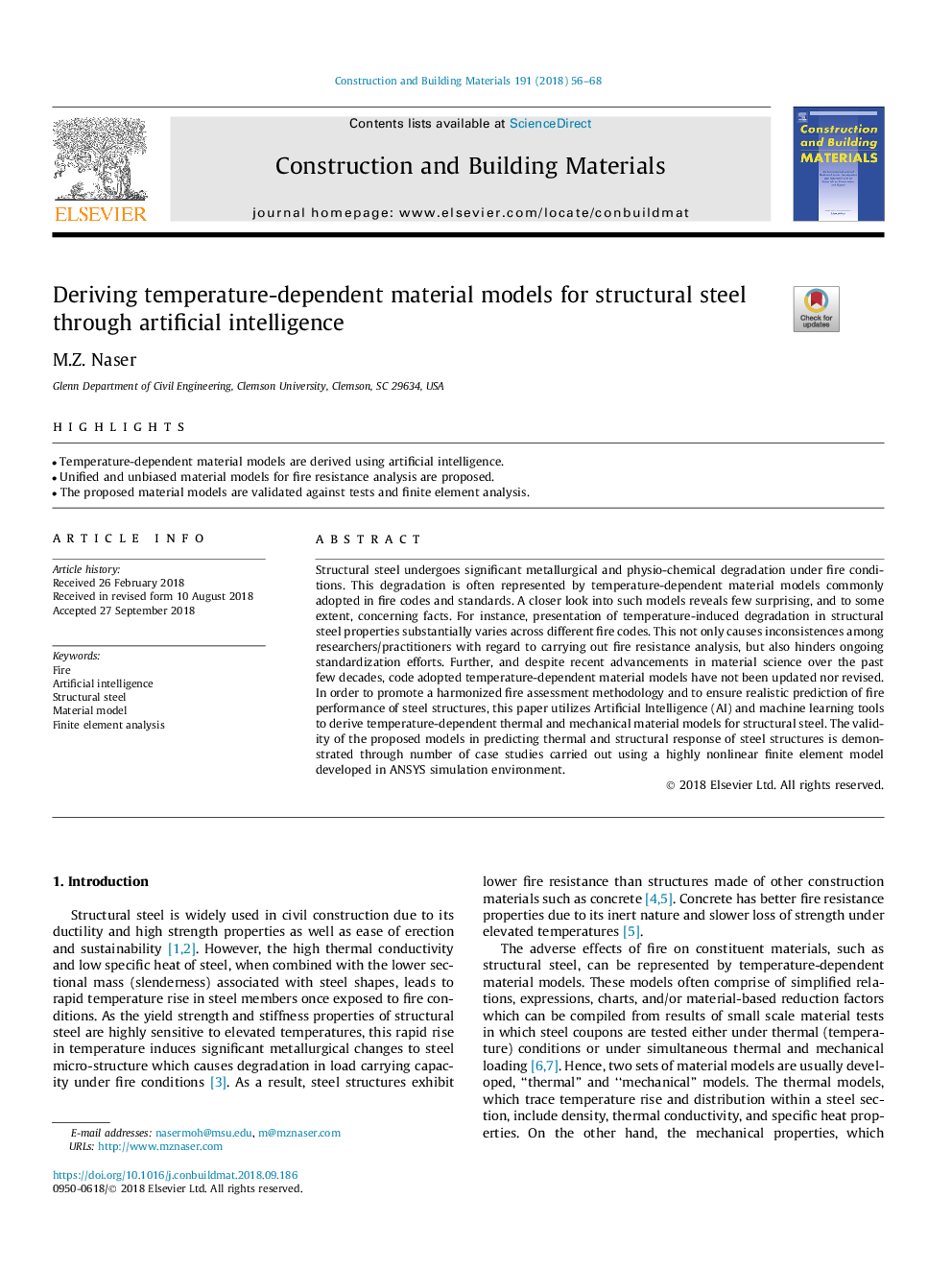| Article ID | Journal | Published Year | Pages | File Type |
|---|---|---|---|---|
| 11012609 | Construction and Building Materials | 2018 | 13 Pages |
Abstract
Structural steel undergoes significant metallurgical and physio-chemical degradation under fire conditions. This degradation is often represented by temperature-dependent material models commonly adopted in fire codes and standards. A closer look into such models reveals few surprising, and to some extent, concerning facts. For instance, presentation of temperature-induced degradation in structural steel properties substantially varies across different fire codes. This not only causes inconsistences among researchers/practitioners with regard to carrying out fire resistance analysis, but also hinders ongoing standardization efforts. Further, and despite recent advancements in material science over the past few decades, code adopted temperature-dependent material models have not been updated nor revised. In order to promote a harmonized fire assessment methodology and to ensure realistic prediction of fire performance of steel structures, this paper utilizes Artificial Intelligence (AI) and machine learning tools to derive temperature-dependent thermal and mechanical material models for structural steel. The validity of the proposed models in predicting thermal and structural response of steel structures is demonstrated through number of case studies carried out using a highly nonlinear finite element model developed in ANSYS simulation environment.
Related Topics
Physical Sciences and Engineering
Engineering
Civil and Structural Engineering
Authors
M.Z. Naser,
